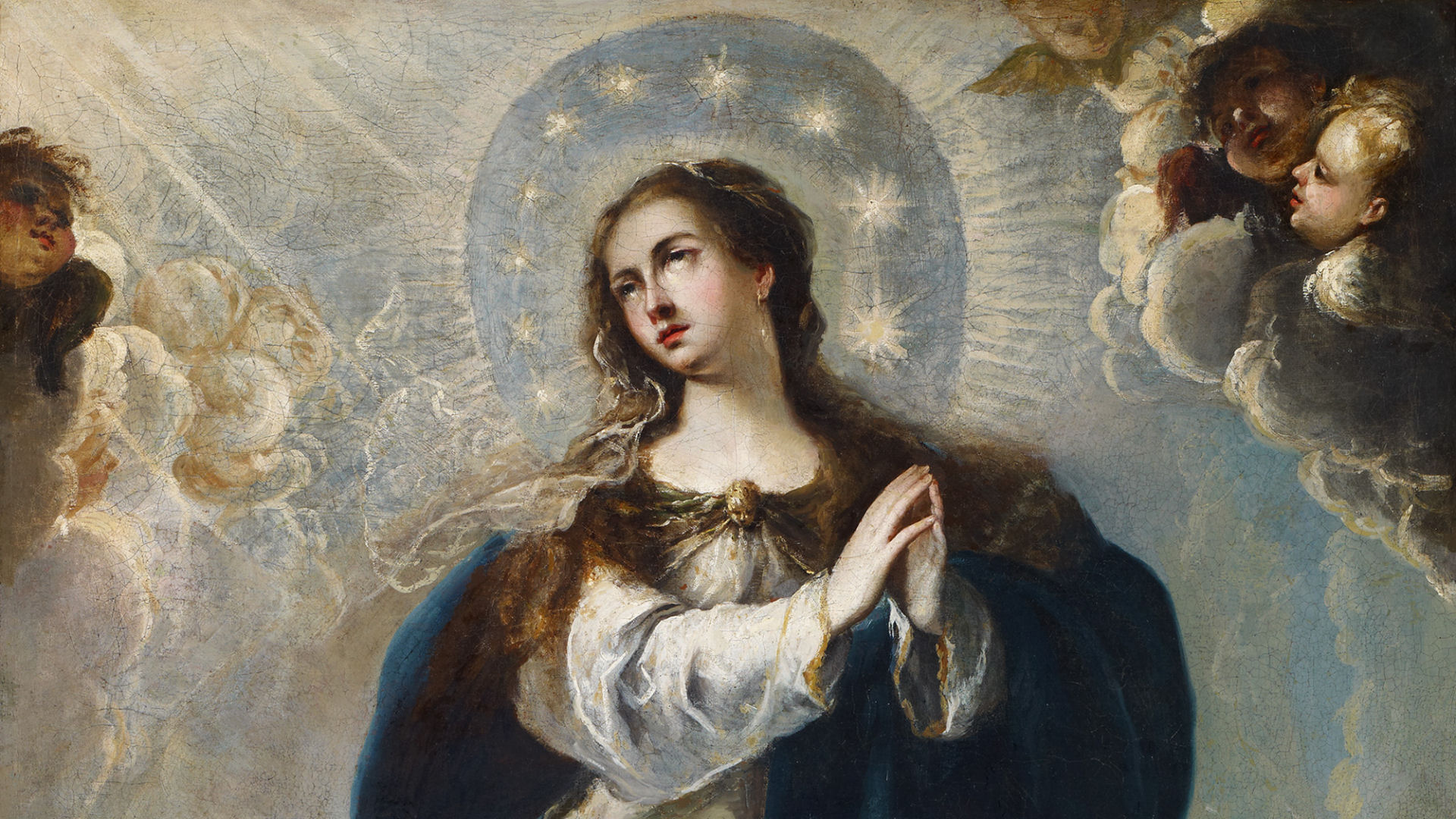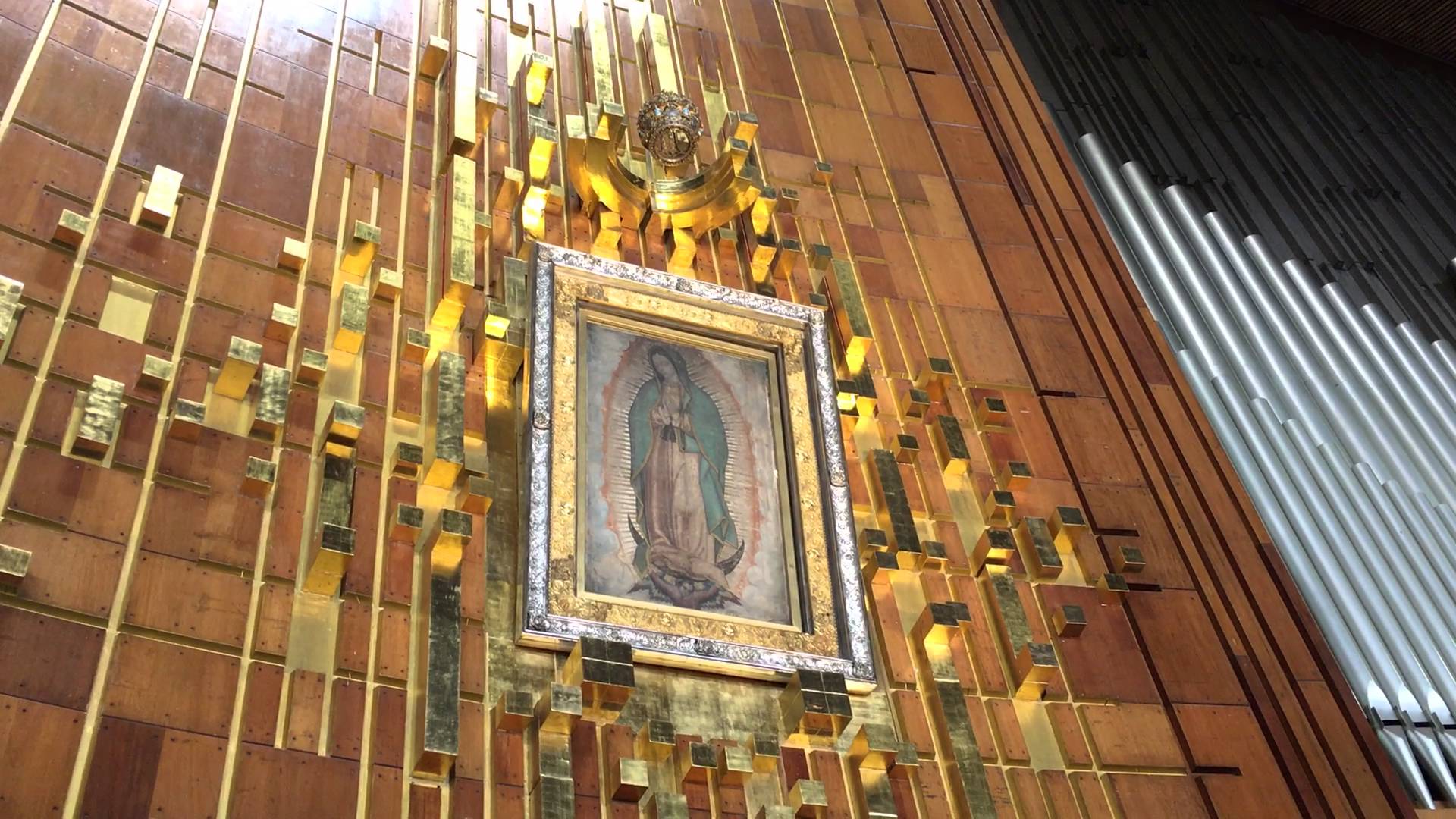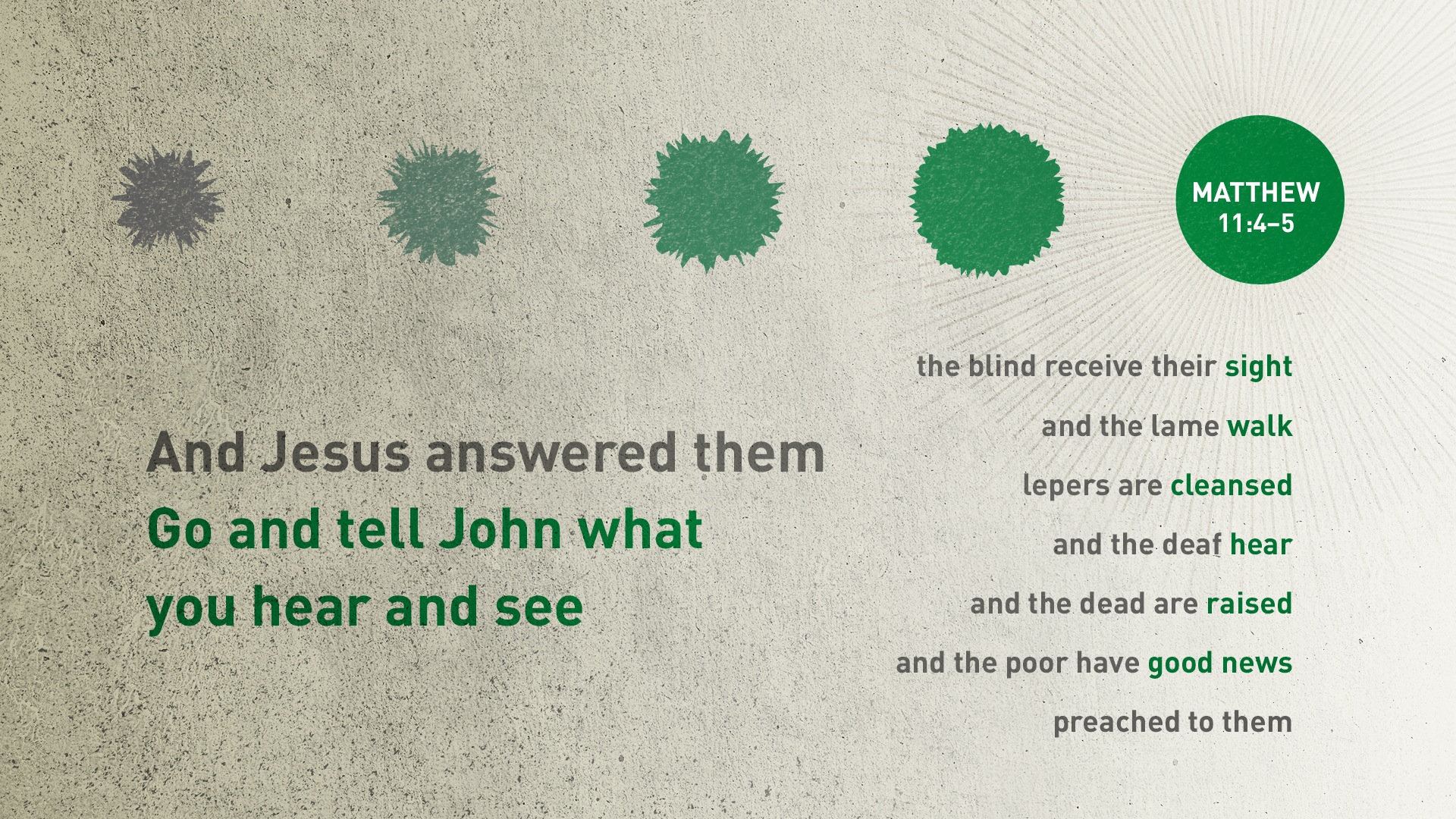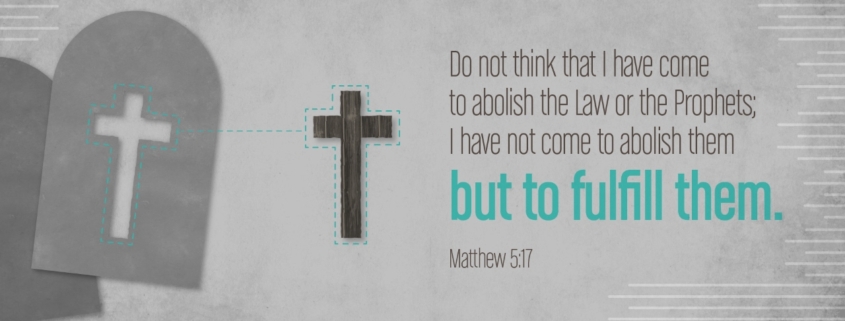In the aftermath of Judas’ betrayal, Jesus explains what true discipleship looks like, and what he has to do first in order to make it possible. We can share the light of Christ during the dark Coronavirus crisis, too.
Posts
Did you know that Jesus wasn’t the first Jewish king to ride in triumph into Jerusalem on a donkey? Jesus knew it — and that’s why he did what he did! Check out this quick Palm Sunday video (be sure to subscribe to our YouTube channel), and share it with your friends. Welcome to Holy Week 2020 on TheFaithExplained.com!
Happy Feast of the Visitation! In this teaching, recorded live at on pilgrimage at the Church of the Visitation in Israel, Cale Clarke, Director of The Faith Explained Institute, explains the significance of the site. Learn how the Gospel writers show how Mary fits into salvation history using typology.
Interested in joining us on our 2019 Faith Explained Holy Land Pilgrimage? Drop us a line at TheFaithExplained.com/contact and we’ll send you the info!
Here’s my December article for Catholic Answers Magazine. Merry Christmas!
“The beginning of the gospel of Jesus Christ, the Son of God” (Mark 1:1).
The Gospel of Mark doesn’t have an “infancy narrative” about the events surrounding Jesus’ conception and birth as do Matthew and Luke. Rather, Mark begins in a deceptively simple manner with these opening words, known as an incipit.
Almost 2,000 years after these words were originally inscribed on parchment, we tend to read this line and think nothing much of it—perhaps even yawn—because it’s something we’ve heard many times before. And yet with this simple sentence, Mark would have absolutely shocked the entire world, arresting the attention of pious Jews and pagan Romans alike.
With respect to a Jewish audience, it’s easy to see why: in calling Jesus the Christ, Mark signals that he the long-awaited Jewish Messiah. But it’s the term Son of God that would have raised many a Roman eyebrow (remember—Mark’s Gospel was written to the Church at Rome, where he served as the chronicler of Peter’s memoirs of the Lord). Why is that?
Mark has a big problem as he tries to convince Romans that they should commit their lives to Jesus—and the crux of the matter is the cross itself. Who was the most powerful person in the Roman Empire? Why, the emperor himself, obviously. The Roman Caesars were crowned in an elaborate ceremony in which they were draped in a royal purple robe, with great pomp, amidst shouts of “Hail, Caesar!” When a new emperor ascended to the throne, or when Rome scored a great military victory, it was published throughout the empire as “Good News.”
In contrast, the most powerless person in the empire was the victim of crucifixion. This was an ordeal so brutal, so violent, so humiliating, that it was almost never administered to Rome’s own citizens (for whom the comparatively humane act of beheading was the preferred method of execution, as in St. Paul’s case). The contrast between the mighty Caesar and the seemingly defeated Jesus couldn’t have been more stark. This is why one major commentator on Mark calls that Gospel an “apology for the cross.”
We could add to this the many public inscriptions that have been unearthed from Rome’s ruins. These served as a civic catechism of sorts, proclaiming what one was supposed to know and believe as a citizen. And one thing all Romans were expected to assent to was this: not only was the emperor extremely powerful, he was to be considered the divine “son of god.” Here are just a few examples from a much longer list compiled by Craig Evans:
- Julius Caesar (48-44 B.C.):
An inscription from Ephesus describes him as “the manifest god from Ares and Aphrodite, and universal savior of human life.” Also, from Carthaea: “The Carthaean people honor the god and emperor and savior of the inhabited world, Gaius Julius Caesar, son of Gaius Caesar” (there are many more such inscriptions from the period).
- Augustus (30 B.C.-A.D. 14):
“Emperor Caesar Augustus, son of god”; “Emperor Caesar (Augustus), god from god”; “Emperor Caesar Augustus, savior and benefactor.” An inscription from Priene celebrates Augustus’s birthday as “the birthday of the god.”
- Tiberius (A.D. 14-37, who reigned when Jesus was crucified):
“Emperor Tiberius Caesar Augustus, son of god”; and “Emperor Tiberius Caesar, new Augustus, son of god, Zeus the liberator”.
- Nero (the crazed emperor who reigned from A.D. 54-68—there are some real doozies here):
“Nero Caesar, the lord”; “Nero Claudius Caesar… the savior and benefactor of the inhabited world”; “The good god of the inhabited world, the beginning and existence of all good things”; “the son of the greatest of the gods”; and “Nero, the lord of the whole world”.
So, in light of this exalted view of their emperor, why should citizens of Rome choose to pledge their allegiance to Jesus and not Caesar? Readers or hearers of Mark would no doubt be asking this question as they experienced this Gospel. Well, its account of Jesus’ authoritative teaching about the Kingdom, backed up with powerful exorcisms and healings, would no doubt have made an impression.
But so too would the presence in Mark’s Passion narrative of someone whom we might easily overlook: the figure of the Roman centurion who sees Jesus die.
The centurion, whose ultimate superior is Caesar, the alleged “son of god,” may have been aware of how his fellows had humiliated Jesus in a mock “coronation” replete with purple robe and a crown of thorns, and shouts not of “Hail Caesar” but, “Hail, King of the Jews!” as they beat him mercilessly (Mark 15:16-20). Yet somehow, as he watches Jesus die on the throne of the cross, and witnesses the powerful release of Jesus’ spirit, which tears the temple curtain in two, the centurion is granted the grace to recognize that one far greater than Caesar is here: “Surely this man” — and not Caesar — “is the Son of God” (15:37-39).
This was the very statement—politically perilous and subversive—that Roman Christians had to make their own. A statement about who truly possessed a sovereign claim over the world. Many of them were to stare down the absolute claims and power of the state and pay for it with their lives, as Jesus did. Peter himself, the source behind Mark’s Gospel, would also meet the horrific cross.
As we prepare to celebrate the true “birthday of the God” this Christmas, let us reflect on the kingship Jesus claims over our lives. Having conquered the grave, a foe no earthly ruler, however exalted, has ever defeated, he is worthy of it.
My latest for Catholic Answers Magazine.
Once, in Jerusalem, I was privileged to attend Mass with a group of Catholics who had converted from Judaism and celebrated the Mass in Hebrew. None of those present who had come to believe in Yeshua HaMashiach (Jesus the Messiah) would have said they had “changed religions.” They didn’t view the Catholic Church as a new religion that had replaced Judaism—rather, it was Judaism, but with the Messiah having come.
For these converts, many facets of New Covenant worship evoked elements of the Old: features such as the tabernacle, the ambo, and the altar made sense to them in a way that they may not for those who convert to Catholicism from non-Christian or Protestant Christian backgrounds. And the similarities didn’t end with liturgy. They didn’t see Catholicism’s doctrines as something foreign, either. Rather, they saw the continuity, the inner logic, of Jesus’ teachings vis-a-vis the Old Testament.
Considering that Jesus of Nazareth was a faithful Jew, this really shouldn’t be a surprise. Yet throughout the centuries until now, many theologians and scholars have believed the opposite: that Jesus broke clean with the Old Covenant religion of his day, railing against its “legalism” and focusing instead entirely on God’s mercy and love.
Without a doubt, Jesus delighted in dispensing God’s mercy to those who repented of sin. But there is no opposition between mercy and law. In fact, in so many ways, God’s law is an expression of his mercy. A careful reading of the New Testament shows that Jesus was in no way opposed the law given to Moses.
Open your Bible and let’s take a look together.
For example: in the Gospel of Matthew Jesus gives five major discourses that represent the crucial emphases of his teaching that the evangelist wished to impart to his audience. The first is the Sermon on the Mount, in chapters 5-7. The second is the Missionary Discourse in chapter 10, followed by the Parabolic Discourse in chapter 13 and the Community Discourse in chapter 18. The fifth and final speech is the Eschatological Discourse in chapters 24-25.
We have several reasons to believe that Matthew intentionally arranged this material into five “teaching blocks.” First, there are literary clues. Each discourse concludes with the verb telein (“to finish”—cf. Matt. 7:28, 11:1, 13:53, 19:1, 26:1). This corresponds to verbiage from the Pentateuch: “When Moses finished (suntelein) speaking all these words” (Deut. 31:1; cf. Num. 16:31; Deut. 31:24, 32:45).
I’ve discussed elsewhere how Jesus is presented in Matthew as a new Moses. Matthew’s arrangement of Christ’s teaching into five narrative segments is meant to allude to the five books of Moses, the first five books of the Hebrew Bible. Why? In large measure to deal with the allegations of some Jews that Jesus and his followers intended to abolish the Law of Moses. This is an important theme in Matthew’s Gospel, intended as it is for a primarily Hebrew audience.
The number five (are you sensing a theme here?) comes into play most clearly in the material following Matthew 5:17-20, which is the key passage, in many ways, to understanding the Sermon on the Mount. In these verses, Jesus explains that he has “not come to abolish the law, but to fulfill” (v. 17), and that “until heaven and earth pass away, not one letter, not one stroke of a letter, will pass from the law until all is accomplished” (v. 18). Jesus also states that lawbreakers (such as he is accused of being) “will be called least in the kingdom of heaven; but whoever does them and teaches them (the commandments of the law) will be called great in the kingdom of heaven” (v. 19).
Then Jesus states that, in order to enter the kingdom of heaven, one’s “righteousness” must be greater than that of the scribes and Pharisees (v. 20). This is truly a remarkable statement, because in Jesus’ day those very scribes and Pharisees were considered theauthority on the interpretation of the Law of Moses.
This highlights the main issue: who has the true interpretation of the law? Jesus and his followers? The Pharisees and scribes? Some other group?
Jesus goes on to show, by means of a series of five “antitheses” (“You have heard it said . . . but I say to you”), that his interpretation of the law, as practiced by himself and his followers, is the true interpretation—and indeed, the fulfillment—of the law given to Moses. These five antitheses correspond to the five fulfilments of Old Testament prophecy given in the infancy narrative of Matthew (1:22-23, fulfilling Isaiah 7:14; 2:5-6, fulfilling Micah 5:2; 2:15, fulfilling Hosea 11:1; 2:17-18, fulfilling Jeremiah 31:15; and 2:23, which summarizes Judges 13:5 and Isaiah 11:1). Together, they make a powerful case that Jesus has come to fulfill the law and the prophets.
Specifically, the five antitheses of the Sermon on the Mount fulfill five aspects of the books of Moses: Deuteronomy 5:17 is fulfilled in Matthew 5:21; Exodus 20:14 is fulfilled in Matthew 5:27; Leviticus 19:12 is fulfilled in Matthew 5:33; Exodus 21:23-25 is fulfilled in Matthew 5:38; and Leviticus 19:17-18 is fulfilled in Matthew 5:43.
Many “historical Jesus” scholars, when assessing whether Jesus could have plausibly taught what the Gospels claim he did, are fond of employing something called the criterion of double dissimilarity. “If something sounds too much like the teaching of Judaism,” the thinking goes, “or too much like later Church teaching, Jesus probably didn’t say it.” That has always sounded ridiculous to me, considering that Jesus was Jewish and that he founded the Church! We should expect to find an abundance of continuity between the Old Testament, the teaching of Jesus, and that of the Church. And this is exactly what we do find.
And here’s one final, commonsense fact: if Jesus, as many caricatures of him suggest, really represented a radical break with Jewish teaching, there is simply no plausible way he would have garnered such a massive following among his fellow Israelites. No one would have believed that he was the promised Messiah if he had rejected the Law of Moses!
It seems reasonable, then, to believe the opposite, which is exactly what Jesus set out to do: not to abolish the law but to fulfill it (Matt. 5:17).

Today, December 8, marks the great Solemnity of the Immaculate Conception of Mary. And it’s certainly a doctrine misunderstood by many. The Immaculate Conception is not the Virginal Conception of Jesus. Nor does it have anything to do with this, sports fans.
Here’s the actual definition, from Blessed Pope Pius IX, the beloved “Pio Nono”:
We declare, pronounce, and define that the doctrine which holds that the most Blessed Virgin Mary, in the first instance of her conception, by a singular grace and privilege granted by Almighty God, in view of the merits of Jesus Christ, the Savior of the human race, was preserved free from all stain of original sin, is a doctrine revealed by God and therefore to be believed firmly and constantly by all the faithful.
–Ineffabilis Deus, Apostolic Constitution of Pope Pius IX solemnly defining the dogma of the Immaculate Conception, 8 December 1854.
the basis for the Immaculate Conception of Mary in the New Testament is well-known, but today I’d like to share about one of the ways the doctrine is foreshadowed in the Old Testament. In his masterful devotional series, In Conversation with God, Francis Fernandez writes about Mary as the new Temple in which God dwells:
In the litany of Loreto we call upon Mary, House of Gold, the abode of greatest conceivable splendor. When a family turns a house into a home by taking up residence there, the place reflects the individual qualities of the people. They accentuate the beauty of the dwelling place. Just like the Holy Spirit dwelling in Our Lady, the home and its inhabitants make up a particular unity, in much the same way as the body and its garments do. The foremost Tabernacle in the Old Testament, later to be the Temple, is the House of God, where the meeting of Yahweh and his people takes place. When Solomon makes the decision to build the Temple, the Prophets specify that the best available materials are to be used – abundant cedar wood on the inside and clad with gold on the outside. The most highly skilled craftsmen are to work on its construction.
Before God made known his coming into the world in the fullness of time, He prepared Mary as the suitable creature within whom He would dwell for nine months, from the moment of his Incarnation until his birth in Bethlehem. Evidence of God’s power and love show forth in his creation. Mary is the House of Gold, the new Temple of God, and is adorned with so great a beauty that no greater perfection is possible. The grace of her Immaculate Conception, including all the graces and gifts God ever bestowed on her soul, are directed towards the fulfillment of her divine Maternity.
God’s gift of supernatural life to her exceeds that of all the Apostles, Martyrs, Confessors and Virgins combined. It reaches far beyond the experience of anyone who has ever lived, or ever will live, until the end of time. God dwells in Our Lady more than in all the angels and saints, since the foundation of the world, taken together. Truly God has prepared a human vessel in keeping with the dignity of his eternal Son. When we say that Mary has an almost infinite dignity, we mean that among all God’s creatures she is the one who enjoys the most intimate relationship with the Blessed Trinity. Her absolute honor is the highest possible and her majesty is in every way unique. She is the firstborn and most highly favored daughter of the Father, as she has often been called throughout the history of the Church, and as has been reiterated by the Second Vatican Council, Our Lady’s blood relationship with Jesus Christ, the Son of God, leads her to a singular relationship with him.
Mary indeed became the new Temple and Tabernacle of God.

Matthew Leonard, Executive Director of the St. Paul Center for Biblical Theology:
In the fifteenth and sixteenth centuries, the native people of Mexico City suffered conquest first by the Aztecs and then by the Spanish conquistadores. It was the custom of the Aztecs to harvest the conquered people as victims for human sacrifice, offered to the snake god Quetzalcoatl (Qweztzel-coh-AH-tul). Think Mel Gibson’s movie “Apocalypto”, though it was about Mayans. Same basic, brutal principle.
By the Aztecs’ own account, this cost a quarter of a million human lives per year. In the dedication of just one temple, a celebration lasting four days, they slaughtered more than eighty thousand men and women. As you can imagine, these native peoples lived a life of natural and supernatural terror. Yet the fear of their idols kept them trapped in idolatry, and they resisted conversion to the Christian faith. The best efforts of brilliant missionaries proved basically ineffective.
Then, in 1531, the Blessed Virgin Mary appeared in Mexico City to a peasant man named Juan Diego.
Read the rest here.
In Assisi in 2005, my wife and I met an American priest named Padre Sisco. He gave me his contact information, which I, of course, misplaced. This guy was unbelievable – on the off chance any readers out there know him, I’d love to get in touch. He wrote his doctoral dissertation on homilies preached in Mexico following the appearances of Our Lady of Guadalupe, and the miraculous image she left behind.
That would make for some pretty incredible reading – over eight million Mexicans, by some accounts, converted to the faith in just a few years as news of these events spread. As Leonard notes, Mexico had been stubbornly infertile mission territory prior to 1531.
I’ve always found it fascinating that, while the Church on the Continent in the 16th century was being fractured by Luther’s revolt and the events that followed, the most effective evangelistic movement in the history of the world was taking place at the exact same time in the Americas.

In this Sunday’s Gospel reading (Matt 11:2-11), John the Baptist, who by this time has been imprisoned by Herod, sends messengers to ask Jesus if he is the promised Messiah. Have you ever wondered why John did that? Have you ever wondered why Jesus doesn’t simply answer, “Yes”? Read on!
Indeed, Jesus’ reply to the imprisoned John the Baptist (Matt 11:2–6; cf. Luke 7:18–23) is seen by some commentators as not Messianic. Some have even gone so far as to suggest that Jesus never personally believed he was the Messiah. When asked “Are you he who is to come, or shall we look for another?” (Matt 11:3), Jesus answers in what appears to be a vague manner, using words from Isaiah 61: “Go and tell John what you hear and see: the blind receive their sight and the lame walk, lepers are cleansed and the deaf hear, and the dead are raised up, and the poor have good news preached to them. And blessed is he who takes no offense at me” (Matt 11:4-6).
A very important clue as to why Jesus answered the way he did was discovered in the Dead Sea Scrolls. The Scrolls were written roughly around the time of the Advent of Jesus Christ – between the last three centuries BC and the first century AD. Although they were composed by a sectarian, apocalyptic Jewish sect, they do shed light on what Jews who were roughly contemporaneous to Jesus believed about the coming Messiah.
One of the most important Scrolls that was discovered, known as 4Q521, says this:
For the heavens and the earth will listen to his Messiah…For he will honour the devout upon the throne of eternal royalty, freeing prisoners, giving sight to the blind, straightening out the twisted…and the Lord will perform marvellous acts…for he will heal the badly wounded and will make the dead live, he will proclaim good news to the meek, give lavishly to the needy, lead the exiled, and enrich the hungry.
One can easily see by comparing these two texts why it was that John asked the question about Jesus’ Messiahship, and why Jesus replied the way he did. It was assumed that when the Messiah arrived, according to 4Q521, “prisoners would be set free”. The righteous John, at this time languishing in Herod’s prison fortress at Machaerus, is wondering why Jesus hasn’t sprung him in a “prison break” of sorts. Jesus replies to John by noting that his marvellous works indeed match up with the deeds of the expected Messiah, in line with the teaching of Isaiah 61 and 4Q521. For Jesus to be any more explicit than this would arouse the attention of the secular authorities, prior to the completion of his Messianic mission. However, attentive Jews would have understood Jesus’ claims. Thus, in a culturally relevant manner, Jesus is inviting his fellow Hebrews to consider the evidence of his ministry and draw their own conclusions.

On this Second Sunday of Advent, we encounter the figure of John the Baptist in the Gospel reading (Matthew 3:1-12):
John the Baptist appeared, preaching in the desert of Judea
and saying, “Repent, for the kingdom of heaven is at hand!”
It was of him that the prophet Isaiah had spoken when he said:
A voice of one crying out in the desert,
Prepare the way of the Lord,
make straight his paths.
John wore clothing made of camel’s hair
and had a leather belt around his waist.
His food was locusts and wild honey.
At that time Jerusalem, all Judea,
and the whole region around the Jordan
were going out to him
and were being baptized by him in the Jordan River
as they acknowledged their sins.
When he saw many of the Pharisees and Sadducees
coming to his baptism, he said to them, “You brood of vipers!
Who warned you to flee from the coming wrath?
Produce good fruit as evidence of your repentance.
And do not presume to say to yourselves,
‘We have Abraham as our father.’
For I tell you,
God can raise up children to Abraham from these stones.
Even now the ax lies at the root of the trees.
Therefore every tree that does not bear good fruit
will be cut down and thrown into the fire.
I am baptizing you with water, for repentance,
but the one who is coming after me is mightier than I.
I am not worthy to carry his sandals.
He will baptize you with the Holy Spirit and fire.
His winnowing fan is in his hand.
He will clear his threshing floor
and gather his wheat into his barn,
but the chaff he will burn with unquenchable fire.”
John is dripping with not only honey, but with Old Testament motifs. He’s really the last prophet of the Old Covenant, bridging it with the New Covenant (Testament) of Jesus Christ. He is Elijah redux, to be sure, but I want to focus here on a somewhat overlooked section of John’s speech: “And do not presume to say to yourselves, ‘We have Abraham as our father.’ For I tell you, God can raise up children to Abraham from these stones” (Matt 3:9). What stones? And what do they mean?
Near the location where John was speaking, Joshua had set up twelve stones by the Jordan River as a memorial of God’s deliverance of the twelve tribes (Joshua 4). The twelve stones reappear in the time of Elijah, who built an altar with them (1 Kings 18:31-32). When one recalls Jesus’ identification of John with Elijah (Mark 9:13), and John’s own adaptation of Elijah’s very dress, this is instructive. As Elijah once did, John is calling Israel’s twelve tribes to repent, and prepare for the coming of Israel’s Messiah.
There is also a wordplay in effect: the Hebrew word for “stone” (eben) sounds like the Hebrew term for “son” (ben). John is essentially saying that God can obtain new children of his own from elsewhere; Israelites who remain unrepentant and faithless can’t rely on their pedigree alone for salvation; they must repent and become obedient to the teaching of the coming Anointed One.
Today’s Catholics also can’t rely on their baptism alone, their membership in the Church (the new Israel), as a “golden ticket” for salvation. One must ratify one’s baptism by remaining in friendship with God, obedient to Jesus Messiah. Advent offers us a wonderful chance to repent if we haven’t always done so. We must prepare for not only Christmas, the feast of Jesus’ first arrival, but the coming Parousia, Christ’s Second Advent, inexorably approaching.
In this clip, as I guest host Catholic Answers Live, guest Dr. Michael Barber and I field an interesting caller question: What happened to St. Joseph’s body? We’re well aware of Church teaching on the bodily Assumption of Mary (which we also discuss), but are there any doctrines or traditions concerning the fate of St Joseph’s body – or where it might be buried? Watch the clip to find out!
What do you think? Use the share buttons below to share this post via Facebook, Twitter, LinkedIn, or another social network, and post your thoughts.



